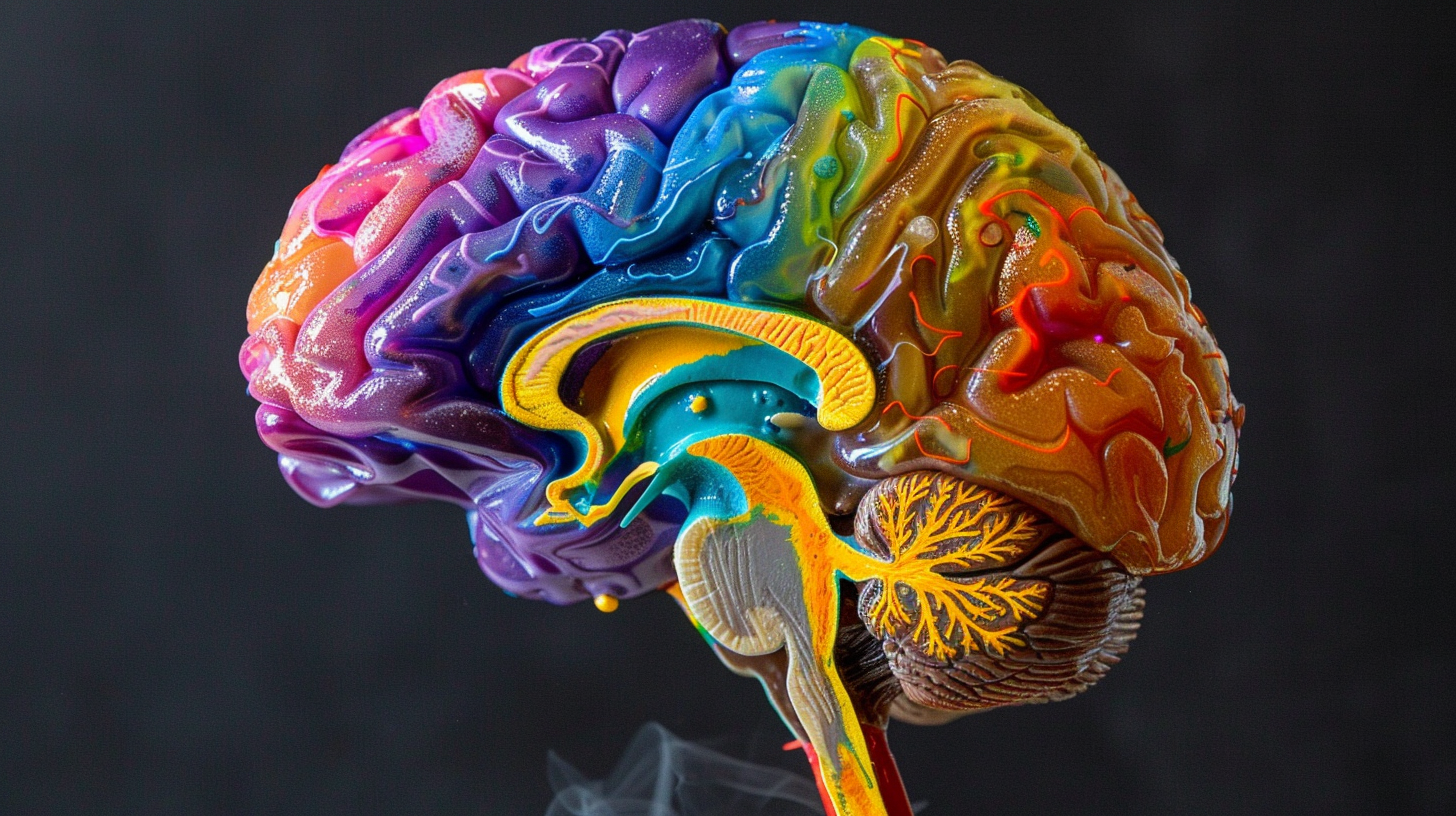Table of Contents Show
In our quest to understand the universe, it’s often said that the final frontier isn’t in the vast expanse of space, but rather, nestled within the intricate folds of our own brains. We’ve made leaps and bounds in cracking the code of this enigmatic organ, shedding light on its complex workings, from the mysteries of consciousness to the marvels of neuroplasticity. Yet, for all we’ve uncovered, the brain retains a shroud of mystery, beckoning us to explore further. Join us as we navigate the latest breakthroughs and ponder the implications of new discoveries that promise to redefine our understanding of the human mind.
Key Takeaways
- Decoding brain signals offers insights into human cognition, enhancing our understanding of the brain’s processing abilities.
- Advances in neuroplasticity reveal the brain’s dynamic ability to rewire itself in response to new experiences.
- High-resolution brain imaging techniques are revolutionizing our ability to visualize and understand the intricate workings of neural networks.
- Innovations in treating neurodegenerative disorders, such as gene therapy and stem cell transplants, are transforming patient care and outcomes.
Decoding Brain Signals
We’ve made significant strides in decoding brain signals, releasing insights into how our minds process information. This journey has been nothing short of revolutionary, offering us a glimpse into the intricacies of human cognition and opening the potential for groundbreaking applications.
At the heart of this exploration is the desire for freedom – the freedom to understand ourselves better, to enhance our mental capabilities, and to find new ways to communicate. We’ve tapped into the power of neuroimaging technologies like fMRI and EEG, which have become our windows into the brain’s functioning. These tools allow us to see what happens in our brains when we think, feel, and make decisions.
We’ve also made headway in interpreting these signals, transforming them into actionable insights. This means we’re not just passively observing brain activity; we’re beginning to understand the language of the brain. It’s like cracking a code that has been mysterious for so long, offering us new freedoms in how we approach mental health, learning, and even interfacing with technology.
Imagine controlling devices with our thoughts or diagnosing neurological conditions earlier than ever before. These aren’t just fantasies; they’re becoming realities as we get better at decoding brain signals. It’s a proof of human ingenuity and a step towards greater autonomy and freedom in how we live our lives.
This progress opens up a world of possibilities, inviting us to dream about what we can achieve next. As we continue to reveal the secrets of the brain, we’re not just uncovering how it works—we’re paving the way for a future where our mental potential is limitless.
Neuroplasticity Unveiled
Delving into the domain of neuroplasticity, we’re uncovering the brain’s remarkable ability to rewire itself in response to new experiences and challenges. This flexibility is not just a feature; it’s a fundamental aspect that gives us the freedom to grow, learn, and adapt throughout our lives. Neuroplasticity means our brains aren’t fixed by adulthood but are dynamic, constantly evolving in response to our actions and environment.
We’ve discovered that activities as varied as learning a new language, playing a musical instrument, or recovering from an injury can all lead to significant changes in the brain’s structure and function. This adaptability is at the heart of our ability to develop new skills and overcome obstacles, offering a hopeful perspective for rehabilitation after brain injury or disease.
Furthermore, we’re learning that our day-to-day behaviors, including how we think and interact with the world around us, play a massive role in shaping our brain’s plasticity. Positive experiences, such as mindfulness and physical exercise, can enhance this adaptability, leading to improved memory, cognition, and emotional health.
Understanding neuroplasticity empowers us to take charge of our mental well-being, emphasizing the importance of nurturing our brains with enriching experiences and a healthy lifestyle. It’s an invitation to continuously mold our minds, to break free from the constraints of our past experiences, and to embrace the potential for transformation that lies within each of us.
Advances in Brain Imaging
As we turn our attention to advances in brain imaging, it’s clear that high-resolution MRI techniques and functional connectivity mapping are at the forefront. These technologies have revolutionized our ability to visualize and understand the brain’s intricate workings. We’re now equipped to explore neural networks and brain function with unprecedented clarity and precision.
High-Resolution MRI Techniques
High-resolution MRI techniques have revolutionized our ability to visualize and understand the intricate details of the human brain. These advancements are not just about seeing more; they’re about freeing our quest for knowledge from the confines of past limitations. Here’s how we’re pushing the boundaries:
- Enhanced Image Clarity: We’re now able to discern between the tiniest structures within the brain, offering clarity that was previously unimaginable.
- Reduced Scan Times: Modern techniques mean quicker scans, making the process less intimidating for individuals and freeing up resources for more research.
- Greater Accessibility: As technology advances, these high-definition scans are becoming more available, allowing a broader range of researchers to explore the brain’s complexities.
Together, we’re peeling back the layers of the brain, liberating our understanding from the constraints of lower resolutions and shorter processing times.
Functional Connectivity Mapping
Building on the advancements of high-resolution MRI techniques, we’re now exploring the brain’s functional connectivity to understand how different regions communicate and work together. This leap forward allows us to map the intricate networks that govern our thoughts, emotions, and behaviors. By doing so, we’re revealing the secrets of the human mind, offering unprecedented insights into mental health, neurological disorders, and cognitive processes. It’s as if we’ve been given a key to previously uncharted territories of our own consciousness.
With this knowledge, we’re not just passive observers; we’re pioneers on the frontier of brain science. We’re charting new paths to healing and understanding, empowering individuals to take control of their mental well-being. It’s a thrilling time to immerse into the mysteries of the brain, and we’re just getting started.
Understanding Consciousness
We’re delving into the complex world of consciousness, aiming to unravel the mysteries of the human mind. It’s a journey toward understanding what makes us truly aware, what differentiates a waking state from sleep, and how consciousness defines our perception of freedom and reality.
Consciousness, often described as the state of being aware of and able to think about one’s own existence, experiences, and the world, remains one of the most enigmatic subjects within neuroscience and philosophy. However, recent breakthroughs have started to shed light on this profound aspect of human life. Here are three pivotal areas of progress:
-
Neural Correlates of Consciousness (NCC): Scientists have identified specific areas and networks in the brain that seem to be essential for consciousness. These findings suggest that consciousness arises from the integrated activity of various brain regions rather than a single part.
-
Quantum Brain Dynamics: Some researchers propose that quantum mechanics might play a role in consciousness. This theory suggests that the quantum states of brain molecules could contribute to the formation of conscious thought, potentially explaining the complexity and immediacy of our experiences.
-
Artificial Intelligence and Consciousness: By creating systems that can mimic or even surpass human cognitive functions, we’re gaining insights into the mechanics of consciousness. These advancements challenge us to reconsider what consciousness truly means and how it might not be exclusive to biological entities.
In our quest for freedom, understanding consciousness offers us a unique lens through which to view our existence and choices. It’s a reminder of the incredible complexity and mystery that lies within each of us, pushing the boundaries of what we understand about the human brain.
The Genetics of Brain Diseases
Delving into the genetics of brain diseases, we reveal the hereditary factors that play pivotal roles in the development and progression of neurological conditions. It’s fascinating how our genetic makeup can reveal to us to certain brain disorders, offering insights that could lead to groundbreaking prevention and treatment strategies. We’re at the cusp of understanding how the intricate dance of genetics and environment influences the health of our most complex organ.
As we explore this field, we recognize the power of genetic information in revealing the mysteries of brain diseases. It’s not just about identifying risks; it’s about empowering individuals with knowledge and choices. The freedom to understand one’s genetic predispositions can lead to proactive health decisions, transforming the way we approach brain health.
| Disease | Genetic Influence |
|---|---|
| Alzheimer’s | Strong link to specific genes like APOE4 |
| Parkinson’s | Genes such as LRRK2 and PARK7 implicated |
| Huntington’s | Caused by a specific genetic mutation |
This table highlights just a few examples where genetics play a significant role in brain diseases. By continuing to unravel these genetic connections, we’re paving the way for personalized medicine. Imagine a future where treatment plans are tailored to the individual’s genetic profile, enhancing efficacy and minimizing side effects.
In our journey into the genetics of brain diseases is not only about revealing the causes but also about championing the freedom to live healthier, more informed lives. We’re on the brink of a new era in neurology, where genetic understanding empowers us to combat these conditions more effectively than ever before.
Breakthroughs in Neural Interfaces
We’ve seen incredible strides in the field of neural interfaces, marking a new era of understanding and interaction with the human brain. Our exploration will cover the technological advancements that have made these interfaces more accessible, the burgeoning applications of brain-computer interfaces, and the ethical dilemmas they present. It’s a journey that invites both excitement and caution as we navigate this uncharted territory.
Neural Interface Technological Advances
Recent advancements in neural interface technology have markedly enhanced our understanding and interaction with the human brain. We’re at the brink of a new era where our ability to communicate with and manipulate brain functions is expanding rapidly. These breakthroughs offer us unprecedented freedom in several key areas:
- Miniaturization of Devices: Smaller, more efficient technologies are being developed, allowing for less invasive procedures and quicker recovery times.
- Improved Accuracy: Enhanced precision in mapping and stimulating brain activity leads to better outcomes in both medical treatments and research applications.
- Wireless Communication: The development of wireless neural interfaces has freed us from the constraints of hardwired connections, opening new possibilities for mobility and long-term monitoring.
Together, these advancements promise a future where our interaction with the brain is limited only by our imagination.
Brain-Computer Interface Applications
Building on these technological advances, let’s explore how brain-computer interface applications are opening new frontiers in neural interaction. We’re witnessing a revolution where our thoughts can directly command machines, offering unprecedented freedom and empowerment. Imagine controlling prosthetic limbs with your mind, restoring mobility to those who’ve lost it. We’re not just talking about medical miracles; we’re also seeing the potential for enhancing human capabilities, like augmenting cognitive functions or interfacing with digital environments intuitively.
This isn’t science fiction anymore; it’s our reality. We’re breaking down barriers between the human mind and the external world, creating a future where our brain’s potential can be fully unbridled. It’s a thrilling time to be alive, as we stand on the brink of expanding human freedom in ways we’ve only dreamed of.
Ethical Considerations in Research
As we explore the domain of neural interfaces, it’s important to sail the ethical landscape that accompanies such transformative technologies. The rapid advancements promise unprecedented freedom in how we interact with machines and understand our own brains. However, they also pose significant ethical dilemmas.
Here are three key considerations:
- Consent and Autonomy: Ensuring participants fully understand the implications of interfacing their brains with machines is critical. They must have the autonomy to make informed decisions.
- Privacy: With access to one’s thoughts, ensuring data protection is paramount. We must safeguard this intimate information from misuse.
- Equity: Advancements should benefit everyone, not just a select few. We’re committed to promoting equal access to these technologies, ensuring they serve to liberate, not segregate.
Sailing these ethical waters is essential for harnessing the true potential of neural interfaces while respecting the freedom and dignity of all individuals.
Memory Formation and Retrieval
Understanding how memories form and are retrieved has been a pivotal area of neuroscience, shedding light on the intricate processes governing human cognition. We’ve come to realize that our ability to remember, to hold onto the past and learn from it, is deeply entwined with our very sense of freedom. The more we comprehend about memory, the better we can navigate our lives, making informed choices that reflect our desires and experiences.
Recent advances have shown us that memory formation is not just a matter of storing information but involves a complex dance between different areas of the brain. The hippocampus, for instance, plays an essential role in transforming our daily experiences into lasting memories. This process, known as consolidation, assures that memories are stored in a more permanent form, ready to be retrieved when we need them.
Retrieval, on the other hand, is about accessing those stored memories. It’s a fascinating process that allows us to recall past experiences, knowledge, and emotions. We’ve learned that this isn’t merely pulling files from a cabinet but an active reconstruction of past events. Each time we recall a memory, it’s slightly altered by our current perspective, a concept that underscores the dynamic nature of our cognitive processes.
As we continue to unravel the mysteries of memory formation and retrieval, we’re not just gaining insights into our brain’s workings. We’re also opening up new avenues for enhancing our cognitive freedom, ensuring that we can retain and access our experiences more effectively. This knowledge empowers us to shape our lives with greater awareness and intention, celebrating the richness of human cognition.
Tackling Neurodegenerative Disorders
As we turn our focus to tackling neurodegenerative disorders, we’re excited to explore the potential of identifying early disease markers. Our discussion will include innovative treatment approaches that promise to revolutionize how these conditions are managed. We’ll also consider how these advancements can enhance the quality of life for individuals affected by these challenging diseases.
Identifying Early Disease Markers
We’re uncovering early disease markers that hold the key to tackling neurodegenerative disorders more effectively. Identifying these markers isn’t just a scientific endeavor; it’s a beacon of hope for millions. It means we’re on the cusp of intervening earlier, potentially halting the progression of diseases that rob us of our most precious asset – our freedom to think, remember, and live fully.
Here’s how we’re making strides:
- Advanced Imaging Techniques: We’re harnessing cutting-edge technology to visualize brain changes long before symptoms appear.
- Genetic Profiling: By mapping genetic predispositions, we’re pinpointing individuals at higher risk.
- Biomarker Discovery: We’re identifying proteins and other substances in blood and cerebrospinal fluid that signal the onset of neurodegenerative diseases.
Together, these advancements promise a future where freedom from the shadow of neurodegeneration is within our grasp.
Innovative Treatment Approaches
Building on our ability to identify early disease markers, we’re now exploring groundbreaking treatment methods to combat neurodegenerative disorders. We’re pushing the boundaries of science to offer new hope and freedom to those affected.
| Approach | Mechanism | Potential Impact |
|---|---|---|
| Gene Therapy | Correcting defective genes | Halts disease progression |
| Stem Cell Transplants | Replacing damaged neurons | Restores lost functions |
| Immunotherapy | Targeting disease-specific pathways | Reduces inflammation and damage |
We’re not just looking for treatments; we’re aiming for revolutionary changes that can drastically alter the course of these diseases. By focusing on these innovative approaches, we’re empowering individuals to envision a future beyond the constraints of their conditions. It’s about giving freedom back to those who’ve been held captive by their own brains.
Enhancing Quality of Life
Focusing on enhancing quality of life, we’re tackling neurodegenerative disorders with strategies that go beyond traditional treatment methods. We believe in empowering individuals to live their lives with dignity and independence, despite the challenges that these conditions present. Our approach includes:
- Personalized Medicine: Tailoring treatments to the individual’s genetic makeup, lifestyle, and the specifics of their condition.
- Technology Integration: Utilizing wearable devices and apps to monitor symptoms and adjust treatments in real-time.
- Community Support: Building networks that provide emotional and practical support to those affected and their families.
The Impact of AI on Neuroscience
Artificial Intelligence (AI) is revolutionizing our understanding of the human brain by enabling unprecedented insights into its complex workings. Through AI, we’re able to explore neural networks in ways that were unimaginable just a few decades ago. This technology isn’t just a tool; it’s our companion in unraveling the mysteries of the brain, providing us with the freedom to investigate its intricacies without the limitations of traditional research methods.
AI’s impact on neuroscience can be broken down into several key areas, as shown in the table below:
| Aspect | Impact of AI | Benefit |
|---|---|---|
| Data Analysis | Accelerates processing of large datasets | Enhances efficiency and accuracy |
| Pattern Recognition | Identifies subtle patterns in brain activity | Improves diagnosis and treatment |
| Simulation | Models complex brain networks | Facilitates hypothesis testing |
| Personalized Medicine | Tailors treatments based on individual brain patterns | Increases treatment effectiveness |
| Brain-Computer Interfaces (BCIs) | Enhances the development of BCIs | Expands communication and control for individuals with disabilities |
These advancements are empowering researchers and clinicians alike, offering new pathways to understand, diagnose, and treat neurological conditions. The application of AI in neuroscience is a proof of human ingenuity, and it’s paving the way for a future where the boundaries of brain science are continually expanded. By embracing AI, we’re not just revealing the secrets of the brain; we’re ensuring that everyone has the freedom to benefit from these groundbreaking discoveries.
Brain Development in Children
As we explore the remarkable capabilities of AI in neuroscience, it’s equally important to understand how these technologies can shed light on the complex process of brain development in children. This journey from infancy through adolescence isn’t just vital in shaping the freedom-loving, independent thinkers of tomorrow.
Here’s what we’ve learned:
-
Critical Periods of Growth: The brain undergoes its most significant growth spurt from birth to age three. During this time, neural connections are formed at a rapid pace, influenced by a child’s experiences and environment. This period is a golden opportunity for learning, where each new skill lays the foundation for future intellectual and emotional development.
-
Plasticity is Key: The concept of neuroplasticity, or the brain’s ability to change and adapt, is especially evident in children. Their brains are remarkably resilient, capable of forging new pathways and adapting to challenges. This plasticity allows them to learn languages, solve problems, and adapt to new situations with an ease that often surpasses that of adults.
-
The Role of Play: Play isn’t just a way to pass time; it’s a fundamental component of brain development. Through play, children learn to negotiate, solve problems, develop language skills, and understand the world around them. Encouraging diverse and free play experiences is essential for healthy brain development.
Understanding these key aspects of brain development in children empowers us to create environments that nurture their innate potential. It’s a journey of discovery, where every interaction, every challenge, and every play session shapes the future of our most valuable resource – our children.
Innovations in Psychiatric Treatments
Recent advancements in psychiatric treatments have opened new doors for individuals battling mental health issues, showcasing the power of innovation in transforming lives. We’re witnessing a pivotal moment where the understanding of the human brain is directly influencing the development of more effective, personalized therapies. Gone are the days when the one-size-fits-all approach was the norm. Today, we’re tailoring treatments to fit the unique needs of each person, empowering them to regain control over their lives.
One of the most exciting developments is the use of technology in treatment. We’re now utilizing apps and virtual reality to provide support and therapy in ways that were once unimaginable. These tools are not only making treatment more accessible but also more engaging, which is critical for those who may feel isolated in their struggles.
Moreover, the integration of genetics into psychiatric care is revolutionizing how we approach mental health treatment. By understanding an individual’s genetic makeup, we’re able to predict their response to certain medications, avoiding the trial-and-error approach that can be both time-consuming and emotionally draining. This precision medicine is a game-changer, offering hope to those who have struggled to find effective treatments in the past.
We’re also seeing a shift towards more holistic approaches, combining traditional therapy with lifestyle changes such as diet, exercise, and mindfulness practices. This inclusive approach acknowledges the intricate connection between mind and body, emphasizing the importance of nurturing both for the best mental health.
These innovations are not just changing lives; they’re redefining what it means to live freely, without the constraints of untreated mental health conditions. We’re stepping into an era where mental health care is more accessible, personalized, and effective, opening up a world of possibilities for those seeking freedom from mental illness.
The Future of Brain Research
Looking ahead, we’re poised on the brink of unprecedented discoveries in brain research that promise to reveal the mysteries of the human mind. This thrilling journey into the unknown harbors the potential to revolutionize our comprehension of ourselves and unleash the full spectrum of human consciousness and cognitive capabilities. The path forward is marked by several key areas of focus:
-
Advanced Imaging Techniques: Moving beyond traditional MRI scans. The development of more sophisticated imaging technologies will allow us to observe the brain’s activity in real-time with astonishing clarity. This will enable us to grasp the brain’s intricate workings in ways we’ve never before imagined.
-
Neuroplasticity and Rehabilitation: Discoveries in how the brain can rewire itself hold immense promise for treating brain injuries and neurodegenerative diseases. We’ll explore therapies that harness this plasticity, offering hope and freedom to those who have been trapped by their conditions.
-
Artificial Intelligence and Machine Learning: By integrating AI with neuroscience, we’re on the cusp of developing tools that can analyze complex neural data at an unprecedented scale. This synergy could lead to breakthroughs in understanding brain functions and in the development of new treatments for psychiatric disorders.
As we stand at the threshold of these exciting developments, we’re not just looking at a future where our grasp of the brain is better; we’re looking at a future where every individual has the freedom to unleash their full mental and emotional potential. The horizon is wide and promising, filled with opportunities to explore, comprehend, and enhance the human condition like never before.
Conclusion
We’ve journeyed through the labyrinth of the human brain, uncovering secrets and celebrating breakthroughs. From decoding signals to unraveling neuroplasticity, we’ve witnessed the power of innovation. With each advance, from imaging to understanding consciousness, we’ve edged closer to solving the enigma of our most complex organ. The future beckons with the promise of more discoveries, where AI and genetics could revolutionize treatments, making today’s mysteries tomorrow’s knowledge. Together, we stand on the brink of a new dawn in brain research, ready to leap.








